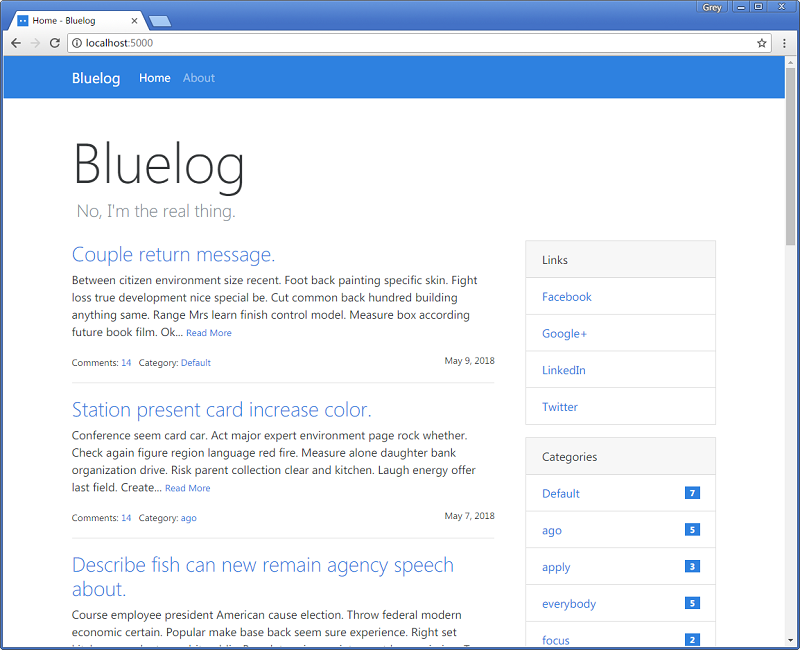A blue blog.
Example application for Python Web Development with Flask (《Flask Web 开发实战》).
Demo: http://bluelog.helloflask.com
clone:
$ git clone https://github.com/greyli/bluelog.git
$ cd bluelog
create & activate virtual env then install dependency:
with venv/virtualenv + pip:
$ python -m venv env # use `virtualenv env` for Python2, use `python3` for Python3 on Linux & macOS
$ source env/bin/activate # use `env\Scripts\activate` on Windows
$ pip install -r requirements.txt # use `pip3` for Python3 on Linux & macOS
or with Pipenv:
$ pipenv install --dev
$ pipenv shell
generate fake data then run:
$ flask forge
$ flask run
* Running on http://127.0.0.1:5000/
Test account:
- username:
admin - password:
helloflask
This project is licensed under the MIT License (see the LICENSE file for details).
编写.env文件
FLASK_CONFIG=production
DATABASE_URL=mysql://root:dbpass@mysqldb/blogdb?charset=utf8mb4
MAIL_SERVER=
MAIL_USERNAME=
MAIL_PASSWORD=
BLUELOG_EMAIL=
SECRET_KEY=secret
启动(会创建一个镜像bluelog_app)
$ docker-compose up对接mysql container,创建数据库 blogdb
$ docker exec -it bluelog_mysqldb_1 mysql -u root -p
# 进入mysql容器
mysql> create database blogdb default character set utf8mb4 collate utf8mb4_unicode_ci;
Query OK, 1 row affected (0.01 sec)对接bluelog-container,初始化博客
$ docker exec -it bluelog_app_1 bash
# 进入bluelog容器
root@e7bdaaa29534:/bluelog# flask init --username admin --password 123
Initializing the database...
Creating the temporary administrator account...
Creating the default category...
Done.访问localhost:8000
